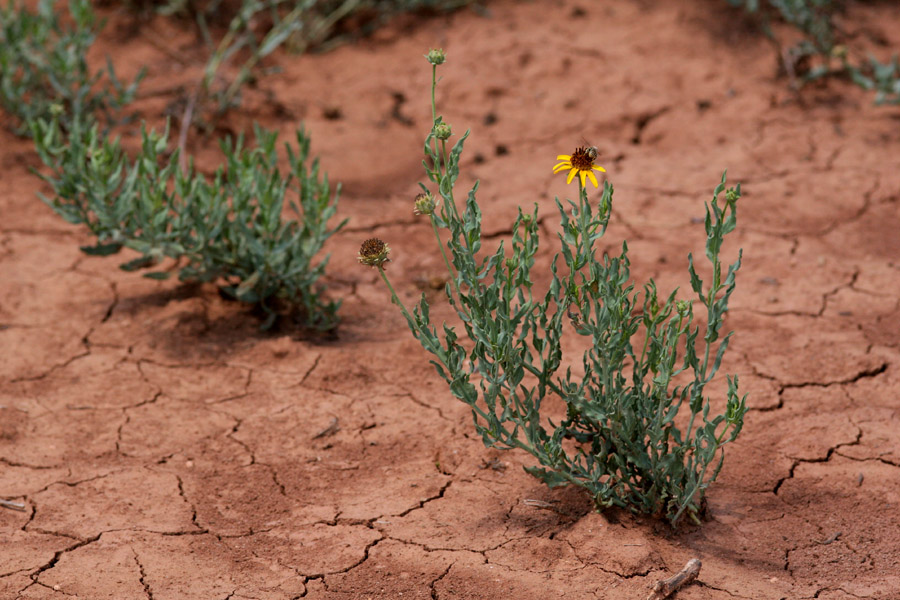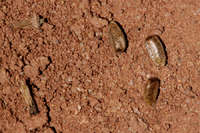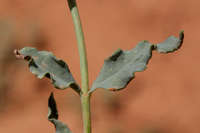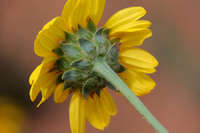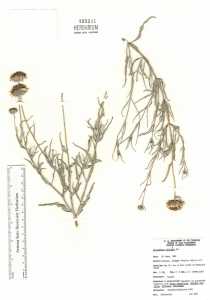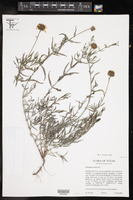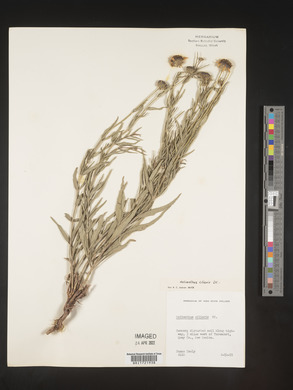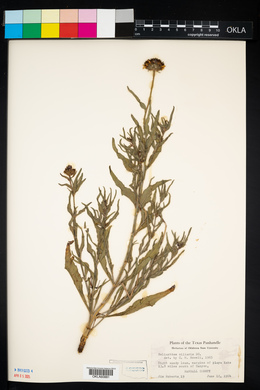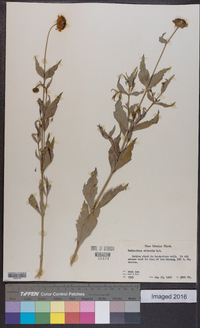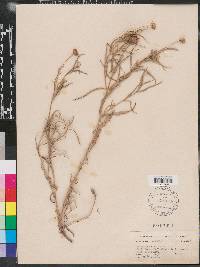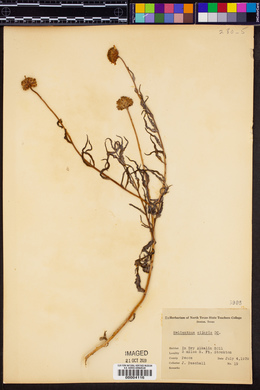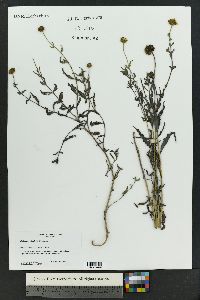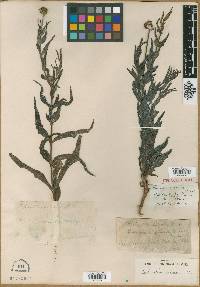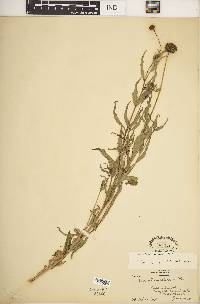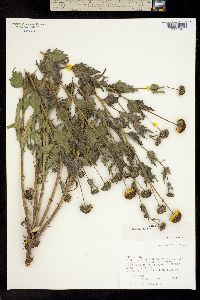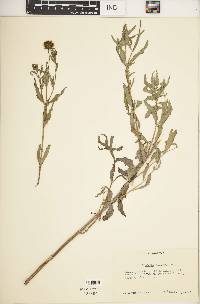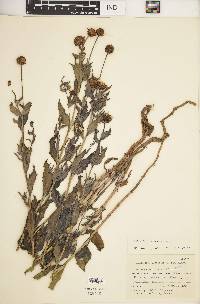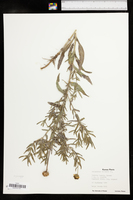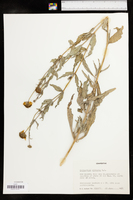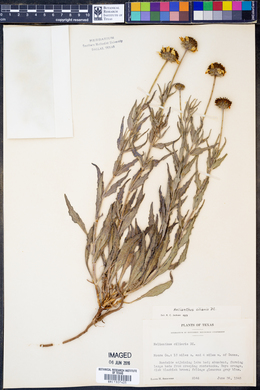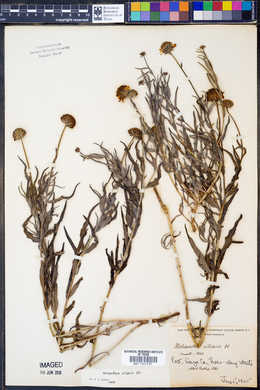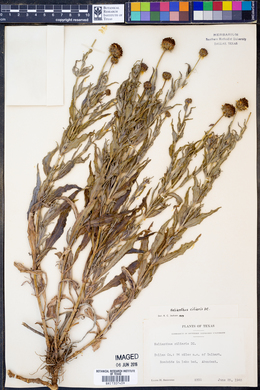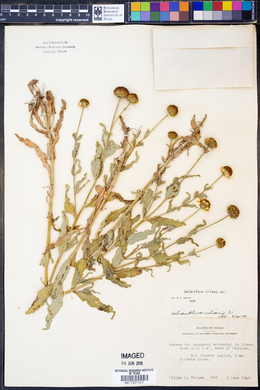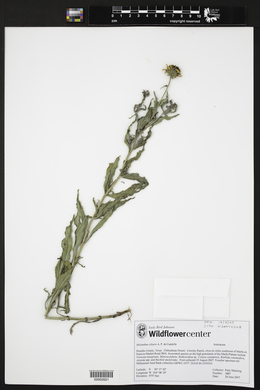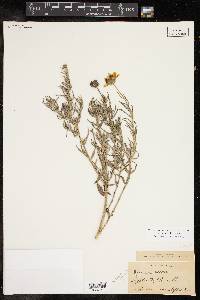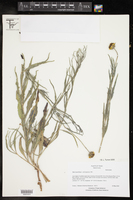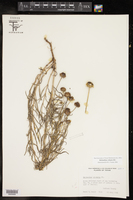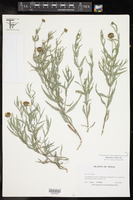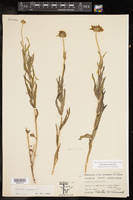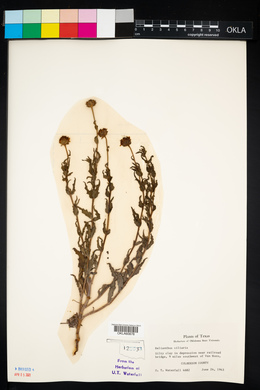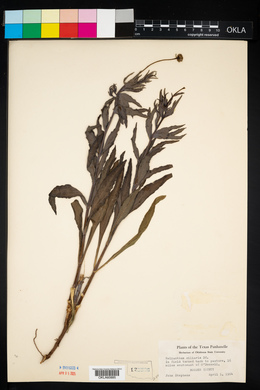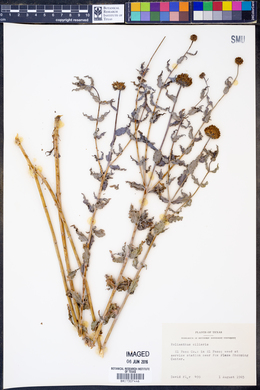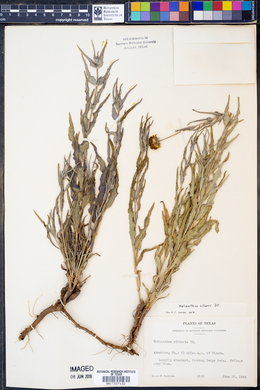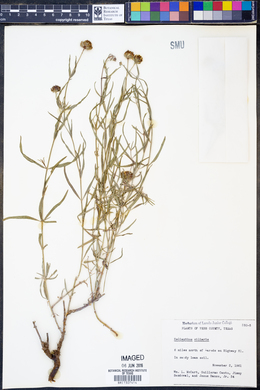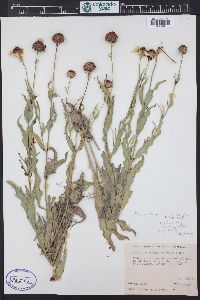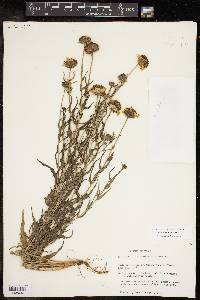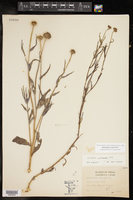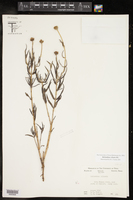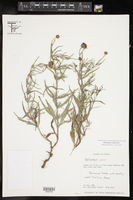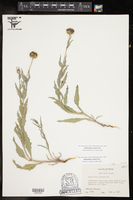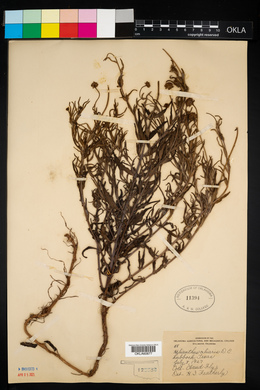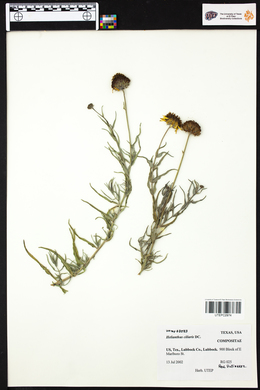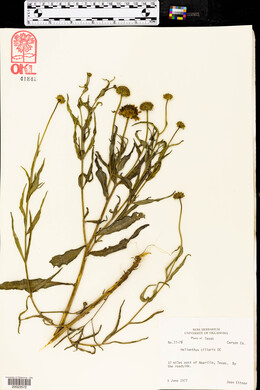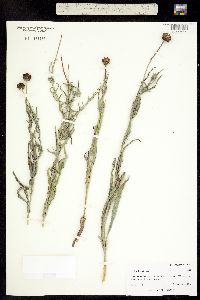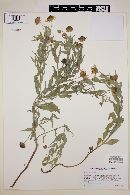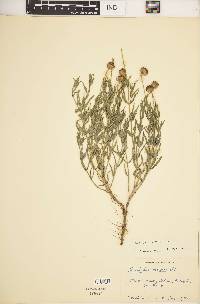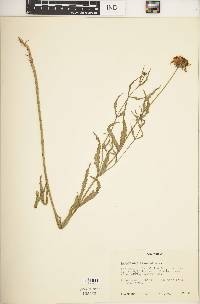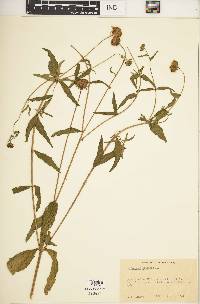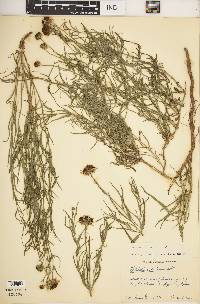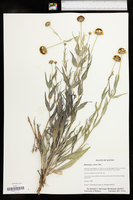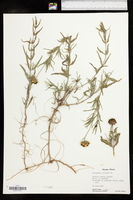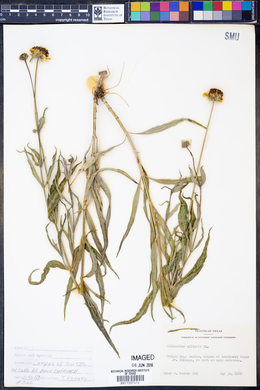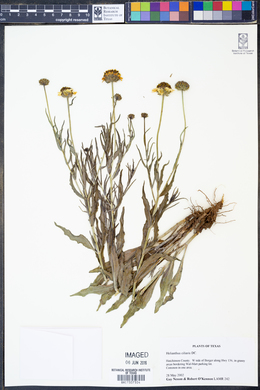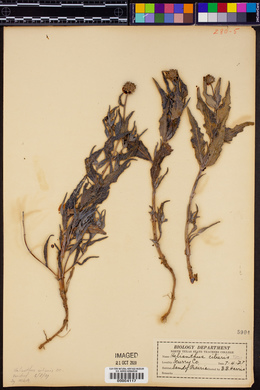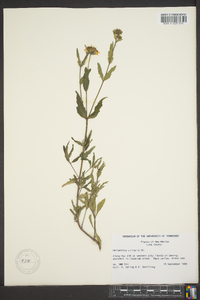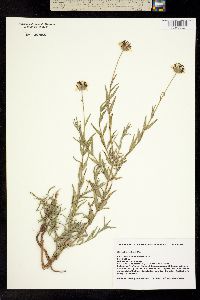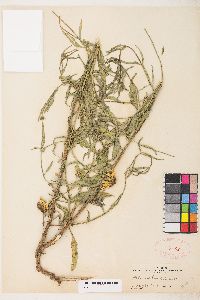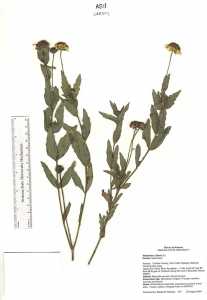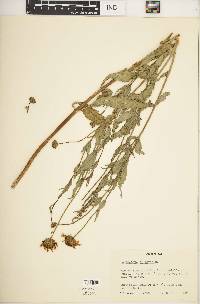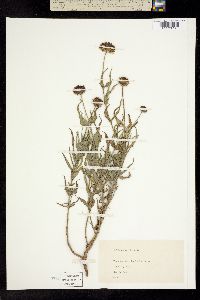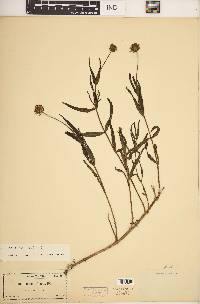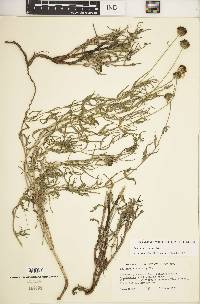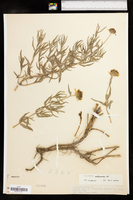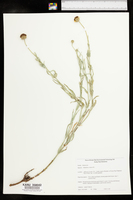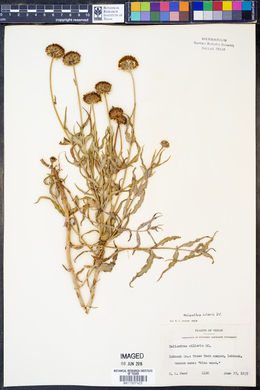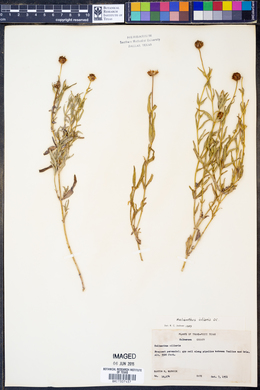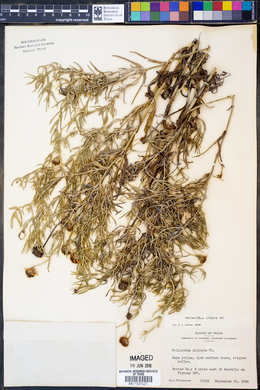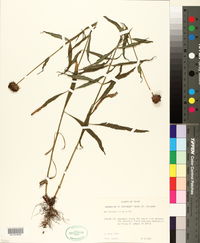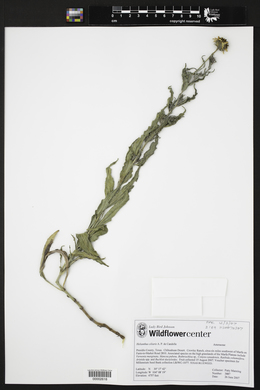
|
|
|
|
Family: Asteraceae
Texas blueweed, more...Texas-Blueweed, sunflower, blueweed, blueweed sunflower, yerba parda (es: girasol azul)
[Linsecomia glauca Buckley] |
Perennials, 40-70 cm (rhizomatous or with creeping roots, often forming extensive colonies). Stems decumbent to ± erect, glabrous or glabrate (glaucous). Leaves cauline; mostly opposite; sessile; blades (often bluish green, 1- or 3-nerved) linear to lanceolate, 3-7.5 × 0.5-2.2 cm, bases ± cuneate, margins entire or serrate (usually ciliate and undulate), faces glabrous or glabrate to hispid. Heads 1-5. Peduncles (1-)3-13 cm. Involucres hemispheric, 12-25 mm diam. Phyllaries 16-19, ovate to lance-ovate, 3-8 × 2-3.5 mm, (margins ciliate) apices obtuse to acute, abaxial faces glabrate to ± strigose, not gland-dotted. Paleae 7-7.5 mm, subentire to 3-toothed (apices obtuse to acute, hairy, gland-dotted). Ray florets 10-18; laminae 8-9 mm. Disc florets 35+; corollas 4-6 mm, lobes reddish; anthers brownish red, appendages brownish red (style branches yellow). Cypselae 3-3.5 mm, glabrous; pappi of 2 aristate scales 1.2-1.5 mm. 2n = 68, 102. Flowering summer-fall. Roadsides, ditches, cultivated fields, open drainage areas; 10-2600 m; Ariz., Calif., Colo., Ill., Kans., Nebr., Nev., N.Mex., Okla., Tex., Utah; Mexico (Chihuahua, Coahuila, Durango, San Luis Potosí, Sonora, Tamaulipas). Helianthus ciliaris is considered a noxious weed in some states. It can propagate vegetatively from detached pieces of rhizome and spread aggressively, especially in cultivated fields. It has been noted to occur in Idaho and Washington, where control measures have been taken to eliminate it.
FNA 2006, Kearney and Peebles 1969, Heil et al 2013 Duration: Perennial Nativity: Native Lifeform: Forb/Herb General: Perennial herbs, up to 0.5 m tall, from rhizomatous, creeping roots, often forming colonies; stems decumbent to erect, strongly glabrous. Leaves: Opposite and sessile, occasionally alternate on upper stems; blades 1-3 nerved, linear to lanceolate with wedge-shaped bases and and entire to undulate margins; leaf surfaces glabrous to glabrate, occasionally sparsely hispid, bluish-green. Flowers: Flower heads showy and radiate, yellow with reddish centers, solitary or in groups of up to 5 heads; involucres hemispheric, 2 cm high and 4-5 cm wide, the bracts (phyllaries) 15-20, closely overlapping in 3 unequal series, ovate to oblong, with acute tips and white ciliate margins; ray florets 10-18 per flower head, the laminae (ray petals) yellow, 8-10 mm long ; disc flowers about 30 per flower head, reddish; paleae (bracts between florets on the receptacle) 7 mm long, subentire to 3-toothed, hairy, stipitate-glandular. Fruits: Achenes 3-4 mm long, glabrous; topped with a pappus of 2 awn-tipped scales, these 1-2 mm long. Ecology: Found in saline soils in ditches, roadsides, cultivated fields, and open drainage areas, from 1,000-6,500 ft (305-1981 m); flowers July-October. Distribution: CA east to NE south to TX; south to n MEX. Notes: Although the flowers are quite similar, this short, rhizomatous perennial Helianthus is not likely to be mistaken for the common sunflower, Helianthus annuus, which is a quite tall, generally single-stemmed annual. Identify H. ciliaris by its bluish-green, glaucous foliage, mostly opposite leaves, rhizomotous growth form, and flower heads with yellow rays, reddish disks, ciliate phyllaries and hairless achenes. The species propagates quite successfully in certain types of disturbed habitats and despite being native to the western US, is considered a noxious weed in some states. Ethnobotany: Unknown; however, other species in the genus have uses. Etymology: Helianthus is from the Greek helios, sun and anthos, flower; ciliaris refers to the ciliate hairs on the phyllary margins. Synonyms: None Editor: LCrumbacher 2011, FSCoburn 2015, AHazelton 2017 |
|
|
|
This project was made possible in part by the Institute of Museum and Library Services [MG-70-19-0057-19].
Powered by Symbiota

